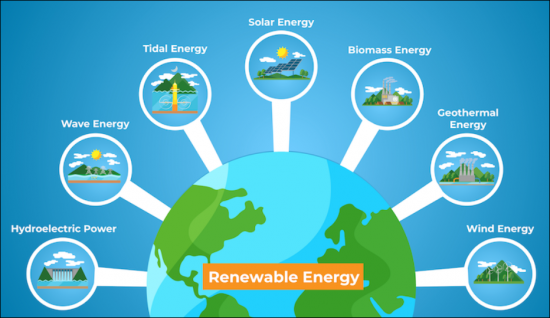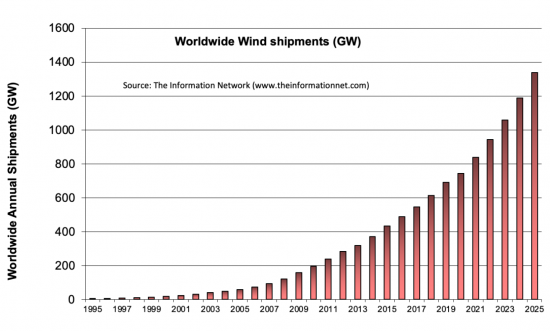 |
市场调查报告书
商品编码
1479766
用于替代能源技术的半导体:机会和市场Semiconductors for Alternative Energy Technologies: Opportunities and Markets |
||||||
半导体是现代电子产品的支柱,准备在替代能源技术中发挥同样的变革作用。其独特的特性和功能能够为再生能源的利用、储存和利用开发和优化高效、可靠和具有成本效益的解决方案。从太阳能电池板和风力涡轮机到电动车 (EV) 和智慧电网,半导体是有望重塑我们能源基础设施的创新的核心。
对替代能源技术的需求源于减少碳排放和减轻气候变迁影响的全球共识。太阳能、风能、水力发电和地热等再生能源在全球能源结构中变得越来越重要,需要先进的技术来更有效、更可靠地利用、转换和储存能源。
半导体以其独特的导电性和控制性,处于这场技术革命的前沿,有助于开发更智慧、更有效率的能源系统和设备。

趋势
报告中概述的主要趋势之一是加速从化石燃料转向太阳能、风能、水力发电和地热能等再生能源的转变。这种转变是由于再生能源技术的成本降低、效率提高和可近性提高。
另一个重要趋势是对储能技术日益增长的关注。随着电网中再生能源的增加,对高效储能解决方案的需求不断增长,以解决间歇性问题并确保可靠的能源供应。
交通电气化正在成为一个重要趋势,而电动车(EV)作为内燃机汽车的可行替代品正在蓬勃发展。
本报告研究和分析了全球替代能源市场,并考虑了半导体在太阳能、风能和电动车等领域的作用。
目录
第一章简介
第二章 太阳能
- 太阳能发电基础设施
- 当前的趋势
- 全球太阳能发电装置总数
- 光伏应用
- 光电经济
- 发电量预测
- 半导体技术
- 逆变器/变流器设备
- 逆变器分析
- 逆变器价格
第三章风能
- 风能基础设施
- 发电
- 涡轮布置
- 离岸风电场
- 风力发电的利用
- 经济性和可行性
- 半导体技术
- 主要零件半导体设备
- 半导体分析
第四章燃料电池
- 燃料电池基础设施
- 燃料电池设计
- 历史
- 燃料电池的类型
- 效率
- 燃料电池的应用
- 燃料电池製造商
- 半导体技术
- 主要零件半导体设备
第五章 储能/电动车技术
- 储能/电动车基础设施
- 用途和应用
- 充电和放电
- 活动部件
- 近期趋势
- 电动车电池
- 车辆充电
- 预测
- HEV/EV 预测
- 主要零件半导体设备-HEV/EV
- ADAS(高级驾驶辅助系统)
The "Semiconductors for Alternative Energy Technologies: Opportunities and Markets" report is a comprehensive resource for understanding the critical intersection of semiconductor technology and renewable energy. It offers a roadmap for navigating the future of energy, highlighting the transformative potential of semiconductors to power a more sustainable world.
Semiconductors, the bedrock of modern electronics, are poised to play a similarly transformative role in alternative energy technologies. Their unique properties and capabilities enable the development and optimization of efficient, reliable, and cost-effective solutions for harnessing, storing, and utilizing renewable energy. From solar panels and wind turbines to electric vehicles (EVs) and smart grids, semiconductors are at the heart of innovations that promise to reshape our energy infrastructure.
The imperative for alternative energy technologies stems from the global consensus on reducing carbon emissions and mitigating the effects of climate change. Renewable energy sources such as solar, wind, hydro, and geothermal have become increasingly vital in the global energy mix, necessitating advanced technologies that can harness, convert, and store energy more efficiently and reliably.
Semiconductors, with their inherent properties of electrical conductivity and control, stand at the forefront of this technological revolution, enabling the development of smarter, more efficient energy systems and devices.

Trends
One of the primary trends outlined in the report is the accelerating shift from fossil fuels to renewable energy sources such as solar, wind, hydro, and geothermal power. This transition is driven by the decreasing cost of renewable energy technologies, enhanced by advancements in efficiency and accessibility. The report underscores the increasing competitiveness of solar photovoltaic (PV) systems and wind turbines, which are becoming more cost-effective than traditional coal or gas-fired power plants in many regions around the globe.
Another significant trend is the growing emphasis on energy storage technologies. As the penetration of renewable energy in the power grid increases, the demand for efficient storage solutions to address intermittency issues and ensure a reliable energy supply is highlighted. The report examines various energy storage technologies, including batteries, pumped hydro storage, community nuclear storate, and geothermal energy, discussing their roles in enabling a smoother integration of renewable sources into the energy mix.
The electrification of transportation emerges as a crucial trend, with electric vehicles (EVs) gaining momentum as a viable alternative to internal combustion engine vehicles. The report explores the implications of this shift for the energy sector, including the increased demand for electricity and the need for advanced charging infrastructure. It also discusses the potential for EVs to act as mobile energy storage units, further integrating the transportation and energy sectors.
About This Report
This report delves into the various segments of the alternative energy market, examining how semiconductor technologies are being applied to advance renewable energy sources. It discusses the pivotal role of semiconductors in photovoltaic cells for solar power, power electronics for wind energy conversion, and batteries and charging infrastructure for electric mobility. Additionally, it covers the significance of semiconductors in emerging areas such as energy harvesting, which encompasses technologies that capture and convert ambient energies into usable electrical energy.
Beyond the technical aspects, the report also addresses the market dynamics shaping the semiconductor industry's involvement in alternative energy. It analyses trends in investment, research and development efforts, and regulatory environments across different geographies. The analysis includes a look at the competitive landscape, identifying key players and innovators driving the integration of semiconductor technologies into renewable energy solutions.

In essence, the "Semiconductors for Alternative Energy Technologies: Opportunities and Markets" report serves as a comprehensive resource for those vested in the future of energy. It underscores the indispensable role of semiconductors in facilitating the transition towards more sustainable, efficient, and innovative energy solutions. Through detailed market insights, technological reviews, and strategic advice, the report charts a course for stakeholders aiming to navigate the evolving landscape of alternative energy technologies, driving the global shift towards a more sustainable and energy-efficient future.
Table of Contents
Chapter 1. Introduction
Chapter 2. Solar Energy
- 2.1. Solar Infrastructure
- 2.1.1. Current developments
- 2.1.2. Worldwide installed photovoltaic totals
- 2.1.3. Applications of PV
- 2.1.3.1. PV Power Stations
- 2.1.3.2. PV in Buildings
- 2.1.3.3. PV in Transport
- 2.1.3.4. PV in Standalone Devices
- 2.1.3.5. Rural Electrification
- 2.1.3.6. Solar Roadways
- 2.1.4. Economics of PV
- 2.1.4.1. Power Costs
- 2.1.4.2. Grid Parity
- 2.1.4.3. Financial Incentives
- 2.1.5. Solar Forecast
- 2.2. Semiconductor Technology
- 2.2.1. Inverter/Converter Devices
- 2.2.2. Inverter Analysis
- 2.2.3. Inverter Pricing
Chapter 3. Wind Energy
- 3.1. Wind Energy Infrastructure
- 3.1.1. Electricity Generation
- 3.1.1.1. Grid Management System
- 3.1.1.2. Capacity Factor
- 3.1.2. Turbine Placement
- 3.1.3. Offshore Wind Farms
- 3.1.4. Utilization Of Wind Power
- 3.1.5. Economics And Feasibility
- 3.1.5.1. Growth And Cost Trends
- 3.1.5.2. Theoretical Potential
- 3.1.5.3. Direct Costs
- 3.1.5.4. External Costs
- 3.1.5.5. Incentives
- 3.1.1. Electricity Generation
- 3.2. Semiconductor Technology
- 3.2.1. Key Component Semiconductor Devices
- 3.2.2. Semiconductor Analysis
Chapter 4. Fuel Cells
- 4.1. Fuel Cell Infrastructure
- 4.1.1. Fuel Cell Design
- 4.1.2. History
- 4.1.3. Types of fuel cells
- 4.1.3.1. Polymer Electrolyte Membrane
- 4.1.3.2. Phosphoric Acid
- 4.1.3.3. Direct Methanol
- 4.1.3.4. Alkaline
- 4.1.3.6. Molten Carbonate
- 4.1.3.7. Solid Oxide
- 4.1.3.8. Proton Exchange Fuel Cells
- 4.1.3.9. Regenerative (Reversible) Fuel Cells
- 4.1.4. Efficiency
- 4.1.4.1. Fuel cell efficiency
- 4.1.4.2. In practice
- 4.1.5. Fuel cell applications
- 4.1.5.1. Applications
- 4.1.5.2. Hydrogen Transportation And Refueling
- 4.1.6. Fuel Cell Manufacturers
- 4.2. Semiconductor Technology
- 4.2.1. Key Component Semiconductor Devices
Chapter 5. Storage/Electric Vehicle Technology
- 5.1. Storage/Electric Vehicle Infrastructure
- 5.1.1. Usage And Applications
- 5.1.2. Charging And Discharging
- 5.1.3. Active Components
- 5.1.3.1. Common Rechargeable Battery Types
- 5.1.3.2. Less Common Types
- 5.1.4. Recent Developments
- 5.1.5. Batteries for Electric Vehicles
- 5.1.5.1. NiMH Batteries
- 5.1.5.2. EV Li-Ion Rechargeable Batteries
- 5.1.6. Vehicle Charging
- 5.1.6.1. Grid Impacts
- 5.1.6.2. Communication
- 5.2. Forecasts
- 5.2.1. HEV/EV Forecast
- 5.2.2. Key Component Semiconductor Devices - HEV/EV
- 5.2.3. ADAS (Advanced Driver-Assistance Systems)
LIST OF TABLES
- 2.1. Total Photovoltaic Peak Power Capacity By Country
- 2.2. World's Largest Photovoltaic Power Plants
- 2.3. PV Inverter Market Distribution
- 2.4. Solar Inverter Market Analysis
- 3.1. Operational Offshore Wind Farms
- 3.2. Offshore Wind Farms Under Construction
- 3.3. Installed Windpower Capacity (MW)
- 3.4. Annual Wind Power Generation (TWh)
- 3.5. U.S. Installed Capacity (Megawatts)
- 4.1. Fuel Cell Comparisons
- 4.2. Fuel Cell Details
- 4.3. Worldwide Fuel Cell Shipments By Type
- 5.1. Rechargeable Battery Technologies
- 5.2 10-Year Costs For Electric Vehicle Batteries
- 5.3. Breakeven Costs For EV Batteries - 40 Mile Range
- 5.4. Breakeven Costs For EV Batteries - 100 Mile Range
- 5.5. Summary Table Of Future Batteries
- 5.6. Types Of Charging Stations
- 5.7. Typical Charging Times By Power Level And Electric Vehicle
- 5.8. Forecast Of Global Sales Of HEVs And EVs
- 5.9. BOM Cost Breakdown-Tesla Model 3, VW ID.3 and VW Golf
- 5.10. ADAS System Key IC Components And Suppliers
- 5.11. Automotive Semiconductor By Application
LIST OF FIGURES
- 2.1. Flat Plate Solar Collector
- 2.2. Parabolic Trough Solar Collector
- 2.3. Solar Dish/Engine Collector
- 2.4. Solar Power Tower Collector
- 2.5. Global Solar PV Module Forecast
- 3.1. Evolution Of U.S. Commercial Wind Technology
- 3.2. U.S. Installed Capacity (Megawatts)
- 3.3. Worldwide Wind Turbine Shipments
- 3.4. Wind Power As Percent Of Electricity
- 4.1. Polymer Electrolyte Membrane (PEM) Fuel Cell
- 4.2. Phosphoric Acid Fuel Cell (PAFC) Fuel Cell
- 4.3. Alkaline (AFC) Fuel Cell
- 4.4. Molten Carbonate (MCFC) Fuel Cell
- 4.5. Solid Oxide (SOFC) Fuel Cell
- 4.6. Proton Exchange Fuel Cell
- 4.7. Transition To A Hydrogen Economy
- 4.8. Hydrogen Reformer Fueling Station
- 4.9. Diversified Fuel Cell Development
- 5.1. Mass And Volume Energy Densities Of Secondary Cells
- 5.2. Battery Capacity For An Electric Vehicle
- 5.3. Battery Price With Time
- 5.4. Cathode Material Cost
- 5.5. Target For Li-Ion Rechargeable Batteries
- 5.6. Diverse Range Of Candidates For Cathodes
- 5.7. Improving Cathode Materials
- 5.8. Comparison Between A Conventional And All-Solid-State LiB
- 5.9. Comparison Between A Conventional And Metal Polysulfide LiB
- 5.10. EV Communications Control System Overview
- 5.11. Forecast of Global Sales of HEVs and EVs
- 5.18. Circuit Diagram For Level 3 Charger
- 5.19. Revenue Forecast For Semiconductors For HEV/EV Chargers











